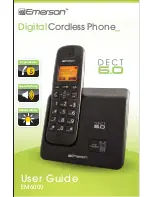
c. Keep the device away from rain or moisture. The penetration of moisture into an
electric device increases the risk of electric shock.
d. Do not use the connecting lead for any purpose other than its intended purpose;
do not use the connecting lead to carry or hang up the device or to pull the plug
out of the power outlet. Keep the connecting lead away from heat, oil, sharp
edges, or moving parts. Damaged or tangled connecting leads increase the risk of
electric shock.
e. If you work with a power tool outdoors, only use extension cords that are
approved for outdoor use. The use of an extension cord that is approved for outdoor
use reduces the risk of electric shock.
f. If you cannot avoid operating the power tool in a damp environment, use a
residual current circuit breaker. The use of a residual current circuit breaker reduces
the risk of electric shock.
3. Personal safety
a. Be attentive and aware of what you are doing; proceed with caution when
working with a power tool. Do not use the power tool if you are tired or under
the influence of drugs, alcohol or medication. One moment of carelessness while
using the device can lead to serious injuries.
b. Always wear personal protective equipment and safety goggles. The
use of personal protective equipment, such as a dust mask, non-slip safety shoes,
hardhat, or hearing protection, depending on the nature and use of the power tool,
reduces the risk of injuries.
c. Avoid unintentional startup. Make sure that the power tool is switched off
before connecting it to the mains and/or a battery, picking it up or carrying it.
Having your finger on the switch while carrying the power tool or having the power
tool switched on when you connect it to the power supply can lead to accidents.
d. Remove adjusting tools or wrenches before switching the power tool on. A tool
or a wrench left in a rotating part of the power tool can lead to injuries.
e. Avoid awkward body postures. Ensure that you are standing in a stable and
safe position and maintain your balance at all times. This will enable you to better
control the power tool in unexpected situations.
f. Wear suitable clothing. Do not wear loose clothing or jewellery. Keep hair,
clothes, and gloves away from moving parts. Loose clothing, jewellery, or long hair
could get caught in moving parts.
g. If dust extraction and collection devices can be mounted, ensure that such
devices are connected and used properly. Using a dust extractor can reduce
hazards caused by dust.
h. Do not lull yourself into a false sense of security and do not ignore the safety
rules for handling power tools, even if you are familiar with the power tool
after many uses. Careless action can lead to serious injuries within fractions of a
second.
15
1247870_Stichsäge_WB 600 PS_BDA.indd 15
1247870_Stichsäge_WB 600 PS_BDA.indd 15
18.01.21 09:38
18.01.21 09:38
















































